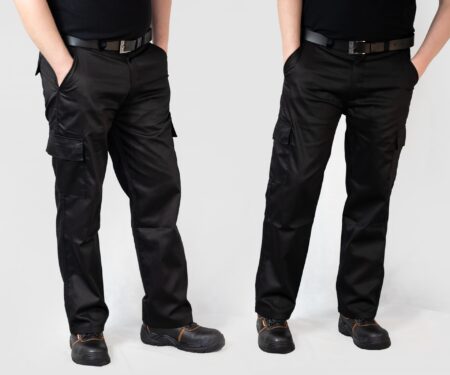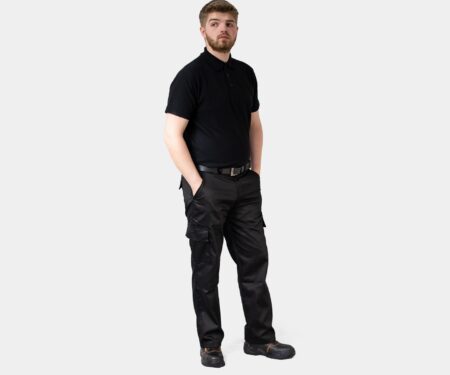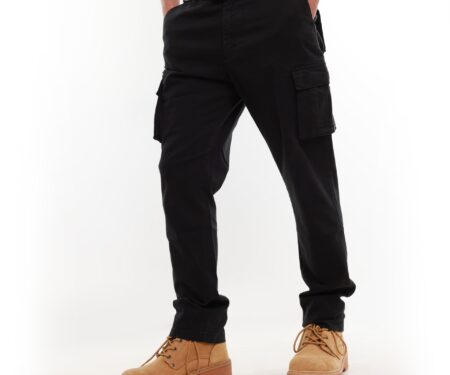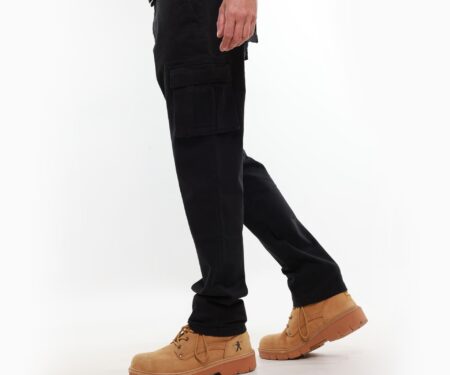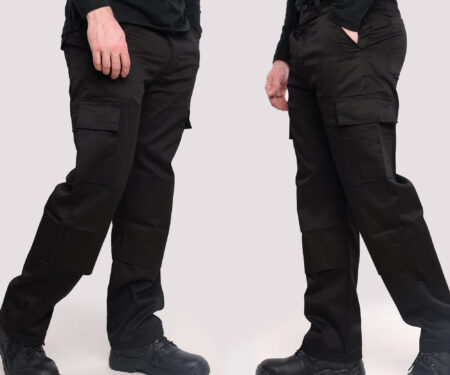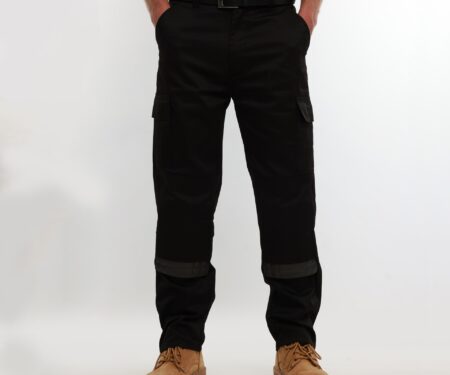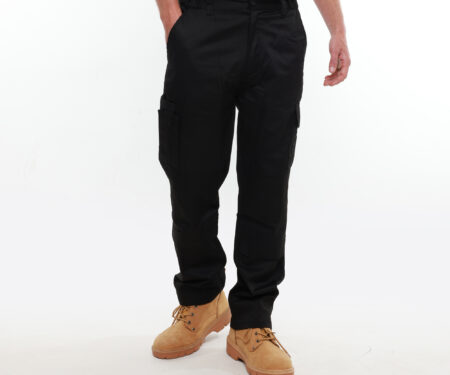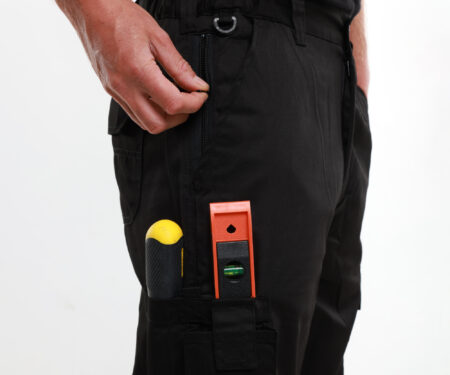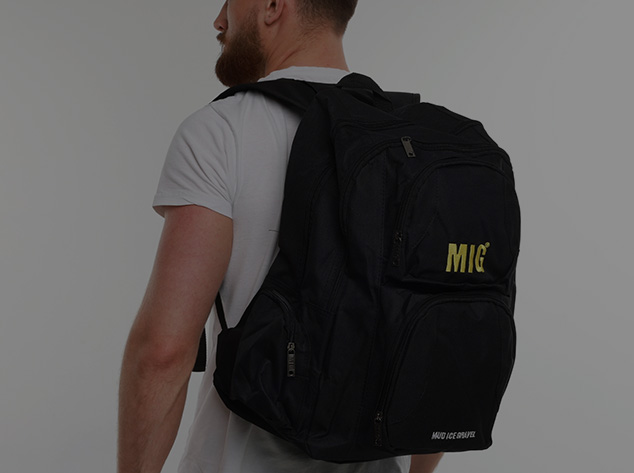Struggling to choose the right work gloves? You are one of many who find all the symbols and numbers too confusing.
In this article we point out the key features to check out when buying work gloves. Going through protective properties, size guides and much more. By the end of this guide, you will have a full understanding of which work gloves.
When do you need work gloves?
Protecting against skin problems is a must within the workplace. Work gloves can be effective to protect hands from skin problems.
Just like other forms of PPE, work gloves should be used to eliminate potential hazards. These hazards could range from a variety of causes. Common hazards are cuts, lacerations, chemicals, water and vibrations.
Exposure to these hazards for an extended period of time can result in an injury. These injuries can be anything from a slight allergic reaction to loss of limbs.
So how do I know what work gloves I need for my workplace?
Choosing the right work gloves
The first thing to identify is a hazard. Once a hazard has been identified, you can use the appropriate protection. Each glove is designed to protect against different hazards and to different levels of effectiveness.
When you have identified a hazard, you now need to find a work glove to protect against it.
Using the protective properties listed below, you will be able to find the exact standard you need to look for.
When choosing a work glove, you must ensure you obtain the correct fit. Incorrect fit can result in both lack of effectiveness and increase injuries.
Source: http://www.hse.gov.uk/skin/employ/gloves.htm
Protective Properties and Standards
There are multiple protective properties and standards within the UK related to work gloves. Each standard is designed to give requirements to protect against a specific hazard. Safety standards such as the EN420 give a more generic requirement which outlines the basic level of protection for all work gloves. Whereas the standards such as EN511 are designed for protection against the cold.
The gloves will be clearly marked with their safety standard and/or other protective properties. Furthermore they should have icons or ratings to give a more accurate level of protection.
EN420 – Protective Gloves
EN420 is the general requirement for safety work gloves. This standard outlines the basic requirements for all work gloves, this combined with other standards allow for a high level of protection.
Each work glove will need to be marked with the following information:
- The manufacturer of the glove
- SKU / Name (Product Identifying Mark)
- Size designation e.g. #11
- Date of obsolescence (if appropriate)
- Dexterity performance e.g #5
- Markings for individuals risks
EN374 – Protective Gloves Against Chemicals
This standard outlines some of the protective qualities needed to protect against chemicals and micro-organisms. First seen in 2003 EN374 is to always be used in conjunction with EN420 the general standard for protective gloves.
To comply with EN374 and EN420 standards the glove must be marked with the following:
- EN420 standard information (See EN240 includes)
- Standard number EN374
- Gloves resisting penetration and permeation – with a pictogram and a minimum of 3 letters from A to L denoting which chemicals have been tested.
- Gloves resisting micro-organisms – must achieve a performance level of 2 in penetration
- Gloves resisting penetration only (Low chemical hazards) – Pictogram
EN407 – Protective Gloves Against Heat
The EN407 standard is designed to protect against thermal risks, this includes both heat and fire. Designed in 2004 this standard must be used alongside EN420 the work gloves standard. Like most work gloves, all work gloves within EN407 must have the following information identifiable on the glove:
- EN420 standard information (See EN240 includes)
- A pictogram for thermal resistance, with 6 digits in a horizontal line in order:
- # – burning resistance
- # – contact heat resistance
- # – convective heat resistance
- # – radiant heat resistance
- # – resistance to small splashes of molten metal
- # – resistance to large splashes of molten metal
Each of the above have been graded X or 1 to 4. X means the resistance has not been tested whilst the higher the number the higher resistance.
EN388 – Glove Protection from Mechanical Risks
EN388 is a standard outlined the protective properties against mechanical risks. Work gloves with the EN388 standard will come with a pictogram with four digits in a horizontal line sometimes below or next to the pictogram. These four digits outline the gloves resistance against an array of items.
Like all work gloves, gloves within this standard must feature the following:
- EN420 standard information (See EN240 includes)
- A pictogram for mechanical risk, with 4 digits in a horizontal line in order:
- # – abrasion resistance (0 to 4)
- # – blade cut resistance (0 to 5)
- # – tear resistance (0 to 4)
- # – puncture resistance (0 to 4)
The higher the number the higher the resistance.
EN10819 – Glove Protection From Vibration and Shock
This standard is designed to outline whether or not a glove is vibration and/or shock resistant. When a glove is approved, it will be clearly visible on the glove in the form of the standard number or a pictogram.
Work gloves with this standard are often worn when using power tools or large machinery.
EN12477 – Welding Protection
The EN12477 standard outlines the core features needed for the protection of welders through work gloves. Initially introduced in 2001 the standard was updated in 2006 with amendments.
Like all work gloves these will need to have the following clearly labelled:
- EN420 standard information (See EN240 includes)
- Pictograms for mechanical and thermal resistance
- A – Higher protection but lower dexterity
- B – Lower protection but higher dexterity
EN511 – Protective Gloves Against Cold
A common work glove used in the winter. Gloves with EN511 standards are designed to protect against the cold. EN511 was initially introduced in 1994 with an update in 2006 superseding the previous, EN511:2006 is currently the most up to date standard for the protection against cold.
Gloves within EN511 must list the following:
- EN420 standard information (See EN240 includes)
- Pictogram for cold risk with 2 or 3 digits in a horizontal line, in order of the following.
- # – convective cold resistance (1[least] to 4[most])
- # – contact cold resistance (1[least] to 4[most])
- 1 – water impermeability (if required)
EN381 – Protective Gloves For Chainsaw Users
For those looking to wear gloves when using a chainsaw, the standard to look out for is EN381. This standard outlines the requirements for the specific use with a chainsaw. Unless specified otherwise the safety protection will be for one glove only, usually the left hand, as the majority of people are right handed.
The glove will be marked the requirements for EN420 plus the following:
- Pictogram – for chainsaw use
- An A or B rating
- A (5 finger glove without protection in the fingers)
- B (glove or mitt also having protection on the back of the fingers, but not the thumb)
- Chain speed class from 0 to 4
- And the standard code i.e EN381-7
Source: http://www.hse.gov.uk/foi/internalops/oms/2009/03/om200903app5.pdf
Allergies and work gloves
An allergic reactions to work gloves are fairly common, skin redness and irritation can be an early sign of an allergy. Latex is usually the culprit and can result in very severe conditions if left untreated.
There are three main types of reactions to latex, irritant contact dermatitis, allergic content dermatitis and immediate allergic reaction. These reactions can be avoided by purchasing latex free disposable gloves or in some cases the correct care for the hands.
Irritant Contact Dermatitis
Repeated use of latex gloves can cause dryness, itching, lesions and burning. If this rash stops at the edge of where the glove would be, then an irritation would be classed in the irritant contact dermatitis category. This irritation can be prevented by the use of moisturiser and specialised glove lining. In most cases the issue will resolve after appropriate care.
Allergic Contact Dermatitis
Similar to irritant contact dermatitis this reaction will be slightly delayed and in most cases more severe. A quick way diagnosis would be if the redness of the skin has spread to areas other than the glove region.
If you have these symptoms you should seek medical attention as soon as possible.
Immediate Allergic Reaction
The most serious of the three, an immediate allergic reaction can be very severe. Possible symptoms can include conjunctivitis, cramps, hives, severe itching, red and itchy skin, running nose, red eyes and an effect on asthma.
In the circumstance where the allergy results in shock the symptoms can be rather severe. These symptoms may include rapid heartbeat, tremors, difficult breathing, low blood pressure and much more.
Source: http://www.hse.gov.uk/skin/employ/latex.htm
Sizing
Having the correct fitting glove is extremely important. Not only will not having a correct fitting glove effect the effectively of the glove, but it can also cause hand fatigue. See the below sizes charts for both width and length to ensure the best fit.
Length
The length of the hand is from the wrist to the top of the middle finger.
|
Measurements |
EU Sizes |
US Sizes |
|
160mm (6 5/16 inches) |
6 |
XS |
|
171mm (6 3/4 inches) |
7 |
S |
|
182mm (7 3/16 inches) |
8 |
M |
|
192mm (7 9/16 inches) |
9 |
L |
|
204mm (8 1/16 inches) |
10 |
XL |
|
215+ mm (8 7/16 inches) |
11 |
2XL |
Width
The width of the hand is the circumference on the hand below the knuckle and excluding the thumb.
|
Measurements |
EU Sizes |
US Sizes |
|
152-178mm (6-7 inches) |
6 |
XS |
|
178-203mm (7-8 inches) |
7 |
S |
|
203-229mm (8-9 inches) |
8 |
M |
|
229-254mm (9-10 inches) |
9 |
L |
|
254-279mm (10-11 inches) |
10 |
XL |
|
279+ mm (11+ inches) |
11 |
2XL |
Source: http://www.hse.gov.uk/skin/employ/glovesizes.htm
Maintenance and care
There are multiple care suggestions for work gloves, they usually depend on the materials used to make the glove. However, common suggestions are to machine wash or hands wash with cold water and a mild laundry detergent. When washing do not use bleach or other solvents as these can damage the protective quality of the work glove. Additionally when drying the work gloves ensure you air dry and do not use machines or heat to dry them.
Specialist materials may need additional treatment to ensure durability and effectiveness. Materials such as leather and cowhide fall into the specialist category and will need cleaning with oil based leather soap.






![clearpay1]](https://www.siteking.co.uk/wp-content/uploads/2023/03/clearpay1.jpg)
